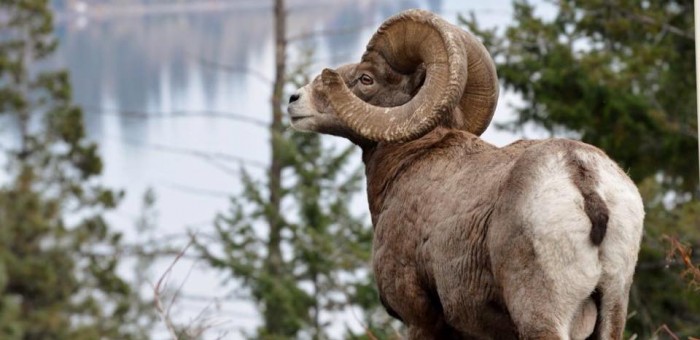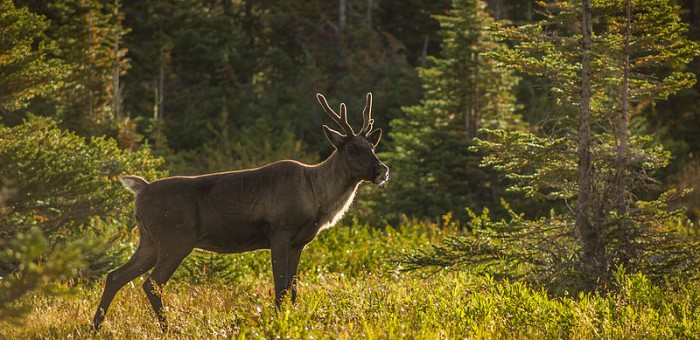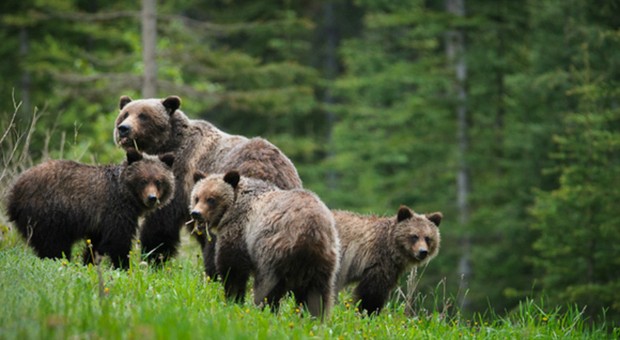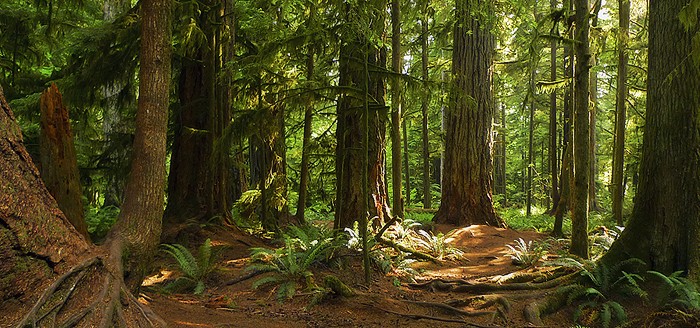Forests
We need to end the trophy hunt in British Columbia
Today I had an OPED appear in the Times Colonist. I reproduce it below with several hyperlinks added.
In the grizzly hunting debate, the BC legislature appears to be the last stronghold protecting the trophy hunting industry in our province.
Economic, scientific, and social justifications for the practice don’t add up. Ecotourism and bear viewing companies generate more revenue than their trigger-happy counterparts, and they are far more sustainable over the long term. There is considerable uncertainty within the scientific community about grizzly bear population numbers and notable concerns about how they will adapt to the challenges climate change will bring. Polls repeatedly put public opposition for trophy hunting in British Columbia in the 90% range, for both urban and rural populations and resident hunters who overwhelmingly oppose the practice.
This is where we must draw an important difference between trophy hunting, and hunting.
Trophy hunting is the killing of an animal for the sake of the kill, the sake of collecting a trophy often a severed head. It is a cruel, selfish, and barbaric practice that is packaged and sold as a sport. Trophy killing has little to do with the thousands of British Columbians who hunt because they enjoy spending time outdoors, respect the animals they harvest, and take great pride in sharing the meat they harvest with their loved ones. If we are going to end Trophy Hunting in British Columbia, we must first understand that it has nothing to do with hunting. As the legislation currently stands, it is illegal to waste meat when hunting in British Columbia, unless the animal you have killed is a cougar, wolf, lynx, bobcat, wolverine, or grizzly bear. The edible parts of big game must be removed from the animal and packed out to one¹s home, or importantly for non-resident hunters, to a meat cutter or a cold storage plant. These last two options provide trophy hunters with legal meat laundering opportunities, meaning that they could still hunt for the trophy but give away the meat.
In March I brought forward a Bill, supported by First Nations Summit, that would close this loophole, forcing the packing out of all meat from all animals (not just grizzly bears) hunted in British Columbia to a person’s home, whether that be in British Columbia, Texas, Australia or Germany. This was carefully written to protect the rights of First Nations and resident hunters in British Columbia, while going after the practice of trophy killing. As you might imagine, the guide outfitting industry did not support this legislation. I suspect many a trophy hunter would find it difficult, if not impossible, to pack out several hundred pounds of Trichinosis laden grizzly bear meat across international borders. As with all legislation, its success or failure relies on proper implementation and a commitment to enforcing it.
When legislating the practices of non-resident hunters, the rights and interests of First Nations and British Columbians should still be first and foremost. We need legislation that says in this province we hunt for food, not for the sake of killing – it is not okay to come here to kill our animals for a prize. Hunting should not be a corporate endeavour. Furthermore our government needs to acknowledge and act upon calls from First Nations who have enacted bans on trophy hunting in their traditional territories.
What has surprised me about this debate is how little our elected officials have had to say about it, given the almost unanimous opposition to the practice amongst British Columbians.
Both the BC Liberals and the BC NDP have refused to have an honest discussion about this issue in the legislature. The BC Liberals point to the studies that justify their inaction, all the while ignoring the growing body of academic literature that suggest action is needed.
The BC NDP on the other hand have yet to state any firm position on the issue. One hopes that this isn¹t simply avoiding taking a position on an important issue for fear that it will help their electoral prospects.
While this is certainly an emotive issue, it’s one that most British Columbians agree on. Trophy killing debases the very legitimate reasons that many British Columbians choose to hunt. It’s time we enact policy that understands the difference between the two, and finally puts an end to trophy hunting in British Columbia.
Saving Woodland Caribou from extirpation will also save old growth forests
Over the last few months British Columbia’s controversial wolf cull has been the subject of substantial public dialogue. Like most MLAs, I receive ongoing communication from numerous British Columbians questioning the rationale behind the government’s approach. One of the most recent communications I received was from a young woman named Katie. She started off her email saying:
“My name is Katie, and I oppose the wolf cull. In school we learned about predator prey relationships. I know you probably won’t care, and that the government will go ahead with it anyway, but please read this…”
I found her email to be a source of inspiration. Despite her apparent cynicism towards politicians, she took the trouble to express her concerns to me (even though she is not a constituent). Her email struck a chord. I campaigned on a promise of evidence-based decision-making and giving youth in our society, the generation that will have to live the consequences of the decisions my generation is making, a voice in the legislature.
The BC NDP have not contributed anything of significance to this issue. Instead, when questioned they offer up a sense of vague disappointment and an endorsement of “long term habitat protection.” Habitat protection is vital of course, especially for herds that are still relatively healthy, but if that is the only policy we offer the threatened mountain caribou they will all be dead by the time the trees grow back.
The policies that the B.C. Liberals are putting forward are concerningly intertwined with the interests of industry and lack safeguards that would ensure other herds do not follow the South Selkirk and South Peace mountain caribou to the brink of extirpation.
As a member of the legislature it is my job to do more than outright oppose policies I don’t like. I need to be able to substantially contribute to the debate and provide feasible solutions and alternatives. So, I got my office to research the topic, and threatened species management more generally, in great detail. Our subsequent analysis derived from a literature review and many hours of discussions with scientists, including wildlife biologists who have expertise in the area.
When you start rationalizing culling one species to protect another you also introduce an ethical element that needs to be considered alongside the science. Is it ever justifiable to kill one animal in the name of saving another? Science can never answer that question.
Let one of those species become threatened and your situation becomes immensely worse. Ethically, the wolf cull is a horrible response to an ecosystem out of balance. From a management perspective, we need to focus on endangered mountain caribou and the logging practices that got them to where they are today.
Before humans began changing the North American landscape, woodland caribou’s range extended largely across Canada. While northern subpopulations of caribou once roamed in massive herds numbering in the thousands, mountain caribou have always been more sparsely distributed. Mountain caribou survive on a lichen-rich diet, especially in winter months, a food source that is intricately linked to old growth forests. As industrial development and logging activities began to fragment their old growth forest ecosystems, mountain caribou populations began to destabilize. Not only has logging demolished much of their habitat directly, the associated road networks and areas of new growth forest have also brought an influx of moose and white-tailed deer into the ecosystem. Populations of wolves then followed the moose and deer (their primary prey) and caribou (their secondary prey) are now being killed as bycatch. We are scrambling to save herds of mountain caribou on the brink of extirpation because we weakened their natural habitat and made them vulnerable to increased predation. Of this, there is no disagreement within the scientific community.
The future for these threatened caribou is not looking promising; climate change is altering food supplies and habitat conditions, industrial activities are unbalancing ecosystem composition, and human settlement is concentrating the necessity of protected wilderness.
As per requirements enforced under Canada’s Species at Risk Act, the province has protected 2.2 million hectares of forest from logging and road building where populations of caribou are classified as threatened. These areas have immeasurable value for preserving British Columbia’s biodiversity, especially in light of ongoing global warming. But these areas, a substantial fraction of which are old growth, also have substantial commercial value.
Recent Freedom of Infomation documents reveal that the B.C. Liberals met with forest industry representatives when developing plans to save endangered caribou. The Minister of Environment said it is common practice to consult all stakeholders, but I worry that industrial pressures are playing too big a role in habitat allocation. My concern, that I raised last week during Question Period in the British Columbia Legislature, is that vast tracts of forests will stop being preserved the moment the threatened caribou herds go extinct. With their death, the protection of their habitat will no longer be enforceable under the Species at Risk Act.
We need to protect as much land as possible from all human activities so remaining wildlife populations have the space and resources needed to respond to predation and food supply challenges. The cost of restricting industrial development in B.C.’s forests would be expensive in terms of lost revenue, but it would save us having to micromanage every dwindling species.
Where is our provincial government on species protection? Shockingly, we are one of only two provinces (the other being Alberta) that don’t even have any endangered species legislation. Protecting more habitat for our biological diverse ecosystems should be the goal, and creating a provincial endangered species act would be a good place to start.
At the same time, it’s crucial that critical environmental issues are not framed simplistically. There are very real consequences to allowing caribou herds to become extirpated. And one of the most profound of these will be the subsequent logging of remaining stands of British Columbia’s old growth timber.
Protecting Habitat for BC’s Woodland Caribou
Today in the legislature I rose to probe the government’s efforts to preserve natural habitat for BC’s remaining healthy wood caribou herds.
Several additional herds are listed as threatened under Canada’s Species at Risk Act. As such, management actions have been required and subsequently taken. In the discussion reproduced below, the Minister of Forests, Lands and Natural Resource Operations notes that the government has already protected 2.2 million hectares of mountain caribou natural habitat from logging and road building.
I point out that these protected areas have enormous value for preserving British Columbia’s biodiversity, especially in light of ongoing global warming (which I recognized that a rather significant number of BC Liberal MLAs still struggle to believe is occurring). Yet these areas, a substantial fraction of which are old growth forest, also have enormous commercial value.
I wanted to know whether the Minister would commit to the continued protection of these forests even if the caribou herds — those herds which required forests to be protected under Canada’s Species at Risk Act in the first place — become extinct.
For example, there is a very real concern that when the Selkirk herd goes extinct, for example (there are only a dozen or so caribou left), vast areas of valuable, yet presently protected, old growth timber stands will be logged.
I was disappointed in the Minister’s response (which I reproduce below as well).
Please note: when I say “in opposition” in the text, I meant “opposite”. I was gesturing to the BC Liberal side of the house where there are a fair number of MLAs who still have a hard time accepting that the world is warming because of increasing greenhouse gases, despite the fact the scientific community has known this for decades.
Question
A. Weaver: It’s well understood within the scientific community that the loss of natural habitat due to human activities is the primary cause for the disappearing caribou herds in British Columbia. Deforested land provides grazing opportunities for ungulates like deer and moose, which move in along with their natural predators — like, for example, wolves and cougars. Caribou then become the bycatch of these predators.
Because the caribou were sparsely distributed to begin with, the herd simply cannot survive this increase in mortality. With so few mountain caribou left in the south Selkirk region and rapidly dwindling or extirpated northern caribou herds in the South Peace region, their future looks bleak.
My question is this. What is this government doing to ensure that the habitat for the remaining relatively healthy woodland caribou populations is protected in light of growing pressures from mining, natural gas and forestry sectors?
Answer
Hon. S. Thomson: As you know, the province has implemented mountain caribou recovery implementation plans. Oversight is provided on those plans by a progress board, a progress team, with a wide range of stakeholders and interests on those teams. They report out annually.
Since the plans were implemented or adopted, over 2.2 million hectares of habitat have been protected — 108,000 hectares in the south Selkirk area; 400,000 hectares in the Peace River.
We continue to work — with the input of scientists, biologists, the progress team — to monitor the implementation, to ensure that we continue to provide that habitat for this very, very important species here in British Columbia.
Supplementary Question
A. Weaver: My concern with this, of course, is that under the Species at Risk Act government must act to protect land when the caribou are threatened. My concern is for existing mountain herds that are not subject to species-at-risk legislation today because they are not threatened today.
You know, these protected lands also are incredibly important for biodiversity, especially in light of the ongoing global warming. I recognize that there are some in opposition who believe it’s not actually occurring despite overwhelming scientific evidence.
A lot of these protected areas for the existing caribou herds that are threatened are old-growth forests. They are only protected in light of the fact that they must protect them under the Species at Risk Act. My concern is this. Scientists will tell government that the south Selkirk herd will go extinct despite the government’s efforts. The government then no longer has to protect these forests under the species-at-risk legislation.
My question to the minister is this. Will the minister commit to the continued protection of these forests? Even if the caribou herds, those herds which required the forest to be protected in the first place under Canada’s Species at Risk Act…. Will they still be protected — because of the pressures that they will get from the forest industry for this valuable timber?
Answer
Hon. S. Thomson: Thank you for the supplementary question. Now 2.2 million hectares of land are protected under the implementation plans. As I said, we continue to work with the progress team to monitor that implementation, to report out annually on progress on the implementation plans.
As was mentioned, the herds are dispersed — 15 separate herds across British Columbia — so that why it’s important we continue to get the scientific and biologist advice in through the progress report and the range of stakeholders that are on the progress board report.
That’s why we’re also taking additional actions, particularly on the high-risk herds, to deal with what the member opposite talked about, imminent expiration of those herds. That’s why we’ve taken extraordinary steps in those specific herds to give the best chance that we can to ensure that we continue to protect and recover those herds. That’s where the focus of activity will continue to take place.
Video
Grizzlies in the Great Bear Rainforest
I posed a question to the Minister of Forests, Lands and Natural Resource Operations today asking how many Grizzly Bears he believes reside in the Great Bear Rainforest. I further asked the Minister if his government supports an immediate moratorium to trophy killing in the Great Bear Rainforest. Below is the excerpt from Hansard. His response will not give heart to those who are working so diligently to protect this iconic species.
TROPHY KILLING AND POPULATION STATUS OF GRIZZLY BEARS
A. Weaver: I just wish to change topic for a second and give the Minister of Finance a break. My question is posed to the Minister of Forests, Lands and Natural Resource Operations.
British Columbia is blessed to be home of the world’s largest pristine coastal temperate forest, the Great Bear rainforest. Tourists flock there every year from around the world to watch grizzly bears in their natural habitat.
Unfortunately, this iconic species is also subject to trophy killing. Twice a year a few wealthy foreigners, predominantly from the U.S., fly into the forest to shoot bears, cut off their heads and leave the bodies to rot. This so-called sport has been banned by nine coastal First Nations and is opposed by nearly 90 percent of British Columbians and, importantly, 95 percent of hunters.
Can the Minister of Forests, Lands and Natural Resource Operations please tell the House precisely how many grizzly bears there are left in the Great Bear rainforest?
Hon. S. Thomson: I acknowledge that the member opposite comes from a different place on this particular issue than we do on this side of the House. Our approach to wildlife management, to hunting in British Columbia, is based on a long history of best available science, based on an approach that hunting is an important part of population management and conservation in British Columbia.
The decisions are based on best available science, are based on conservative estimates of human mortality, are based on conservative estimates — deliberately conservative estimates — of regular mortality for species. That’s not just for grizzly bears. That’s for all species in the province.
Madame Speaker, 58 percent of the territory of the coastal First Nations is closed to grizzly bear hunting. There are about 2,000 bears in the Great Bear rainforest, of which less than 1 percent, 13, are hunted.
Madame Speaker: Member for Oak Bay–Gordon Head on a supplemental.
A. Weaver: I would argue, as clearly indicated, that we actually have no idea how many grizzly bears there are in the Great Bear rainforest, let alone elsewhere in British Columbia. Fortunately, however, in the case of the former, a coalition of nine First Nations, scientists and environmental groups have been undertaking fieldwork on bear populations, breeding habits and the impacts of trophy killing.
Here’s what we do know. In the Great Bear rainforest bear viewing generates 12 times more in visitor spending than bear killing — over 11 times the direct revenue for British Columbia’s provincial government. Bear viewing also generates 50 times the number of jobs as trophy killing. And forest companies and environmental groups have reached a historic agreement on the preservation of the Great Bear rainforest.
In light of the evidence I’ve provided, would the government support an immediate moratorium on trophy killing of grizzly bears in the Great Bear rainforest?
Hon. S. Thomson: Firstly, I want to acknowledge the member opposite’s reference to the agreement that’s been reached between environmental organizations and the forest industry in the Great Bear rainforest. I think that’s something that we can all celebrate — that very, very important step. We look forward to continuing to work with both the industry, those organizations and First Nations in the implementation of that very, very historic, important agreement.
I think the important point to make here is that this is not about either-or. This is about the important contribution that bear viewing and tourism make. It’s also about the important contribution that hunting makes to this province — $360 million annually.
This is not about one or the other. This is about making sure that we manage populations based on science, as I pointed out, based on conservation principles, to ensure that we create that appropriate balance, and that’s what we’ll continue to do.
In our population units for grizzly bears, wherever those populations are at risk, we don’t allow hunting. That’s the case in many of the population units in British Columbia currently. If the populations are at risk, we will not allow hunting in those population units.
Logging Around Cathedral Grove Highlights Need For Forestry Engagement
Media Statement—November 18th, 2013
For immediate release
Victoria, BC: Recent forestry conflicts highlight need for proactive and inclusive approach to decision making.
The growing opposition to Island Timberlands’ plans to log a forest stand only 300 meters from Cathedral Grove, is only the latest sign that British Columbia’s Forestry management process is in desperate need of a review.
“As of 2:00pm on Monday, we have received over 2300 emails from concerned citizens, voicing their opposition to these plans. I completely understand and agree with the specific concerns raised by this campaign. It hints at a much larger disconnect between the decisions that are getting made, and the process to get there. I think people are feeling like they don’t have a voice”.
The decision to log the stand owned by Island Timberlands, adjacent to Cathedral Grove, goes against the idea of using a scientific approach to managing our forests. Identified previously as important Black-tailed Deer wintering habitat, the fracturing of this habitat will have adverse effects. Furthermore, Cathedral Grove is an iconic tourist attraction on Vancouver Island – it is unsurprising that there has been such a public backlash against logging activity so close by. This is an example of the current conflict driven model of forestry management – and the negative impacts it has on everyone involved.
“The current model for decision making in this sector seems to rely on large public backlash to spur proper engagement. This approach hurts everyone. We need to have a system that transparently and proactively engages citizens in the decision making process. This will benefit companies by removing a measure of uncertainty and will allow local communities to feel like they have the tools to protect their ecosystems.”
“I believe it is time for the BC government to re-engage British Columbia’s forestry stakeholders, including environmental groups, local communities, First Nation’s communities, forestry companies, and experts at our Universities, to develop a more proactive, evidence-based approach to identifying which areas should be logged, and which ecosystems need to be preserved.”
Quotes by Andrew Weaver – MLA, Oak Bay – Gordon Head
-30-
Media Enquiries please contact:
Mat Wright – Press Secretary – Andrew Weaver MLA
mat.wright@leg.bc.ca
Mobile (1) 250 216 3382







